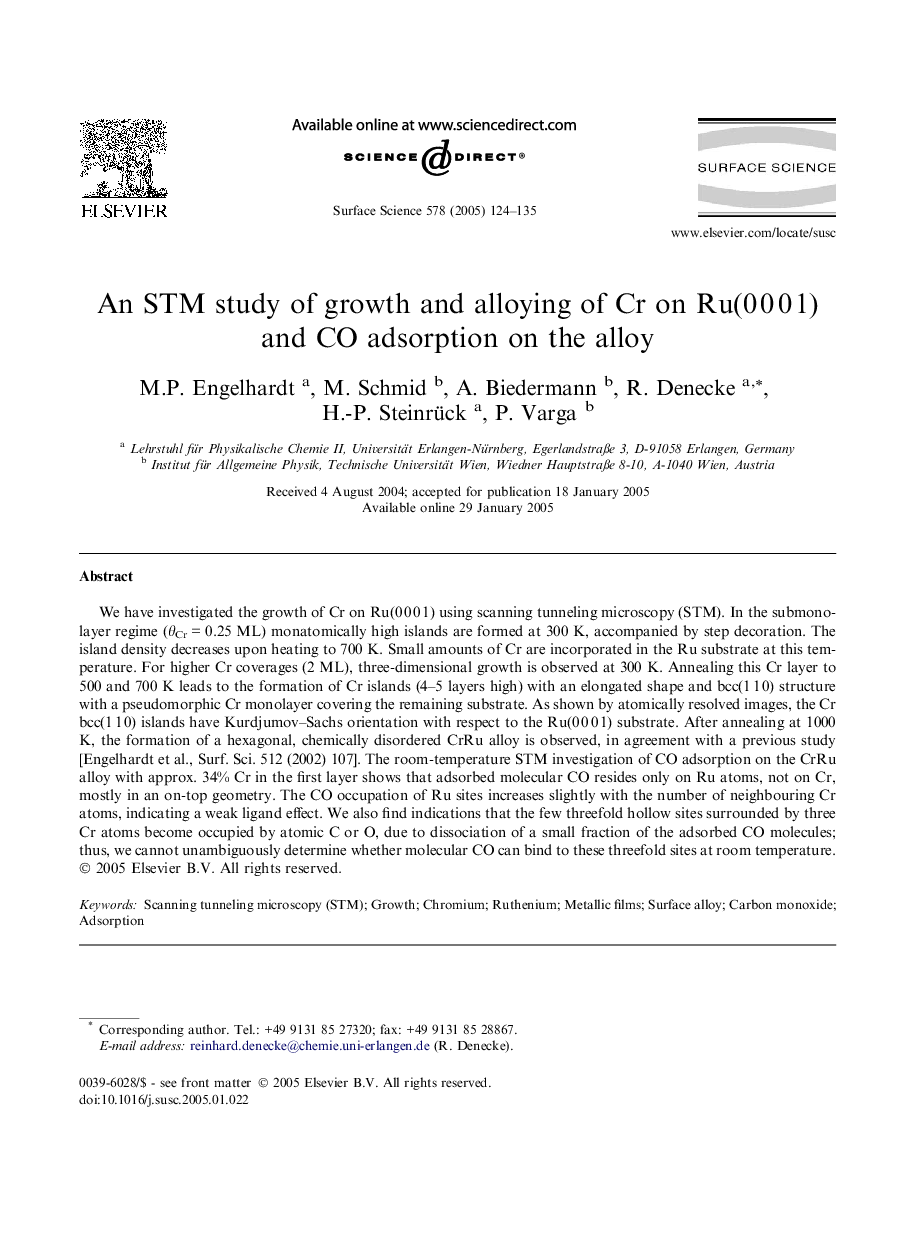| Article ID | Journal | Published Year | Pages | File Type |
|---|---|---|---|---|
| 9595698 | Surface Science | 2005 | 12 Pages |
Abstract
We have investigated the growth of Cr on Ru(0 0 0 1) using scanning tunneling microscopy (STM). In the submonolayer regime (θCr = 0.25 ML) monatomically high islands are formed at 300 K, accompanied by step decoration. The island density decreases upon heating to 700 K. Small amounts of Cr are incorporated in the Ru substrate at this temperature. For higher Cr coverages (2 ML), three-dimensional growth is observed at 300 K. Annealing this Cr layer to 500 and 700 K leads to the formation of Cr islands (4-5 layers high) with an elongated shape and bcc(1 1 0) structure with a pseudomorphic Cr monolayer covering the remaining substrate. As shown by atomically resolved images, the Cr bcc(1 1 0) islands have Kurdjumov-Sachs orientation with respect to the Ru(0 0 0 1) substrate. After annealing at 1000 K, the formation of a hexagonal, chemically disordered CrRu alloy is observed, in agreement with a previous study [Engelhardt et al., Surf. Sci. 512 (2002) 107]. The room-temperature STM investigation of CO adsorption on the CrRu alloy with approx. 34% Cr in the first layer shows that adsorbed molecular CO resides only on Ru atoms, not on Cr, mostly in an on-top geometry. The CO occupation of Ru sites increases slightly with the number of neighbouring Cr atoms, indicating a weak ligand effect. We also find indications that the few threefold hollow sites surrounded by three Cr atoms become occupied by atomic C or O, due to dissociation of a small fraction of the adsorbed CO molecules; thus, we cannot unambiguously determine whether molecular CO can bind to these threefold sites at room temperature.
Keywords
Related Topics
Physical Sciences and Engineering
Chemistry
Physical and Theoretical Chemistry
Authors
M.P. Engelhardt, M. Schmid, A. Biedermann, R. Denecke, H.-P. Steinrück, P. Varga,
